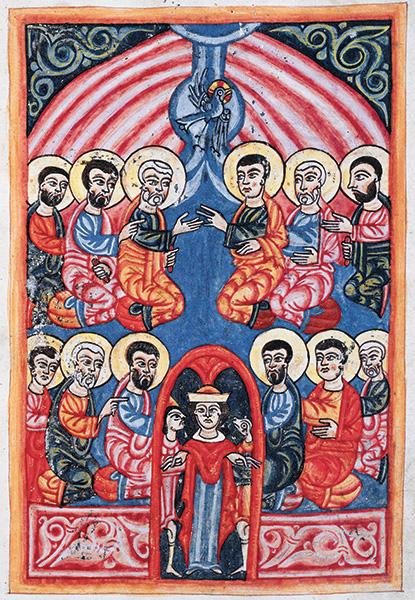Image Details

Scala/Art Resource, NY
Pentecost is the Greek name for the Festival of Weeks as described in Leviticus 23:15–22. The festival falls on the 50th day after the “raising of the sheaf” associated with Passover. (In Greek, Pentēkostē means 50th.) Acts 2 describes a miraculous event that occurred at this festival among Jesus’ disciples and the early Christian church. On the day of Pentecost, they were all gathered together when “suddenly from heaven there came a sound like the rush of a violent wind, and it filled the entire house where they were sitting. Divided tongues, as of fire, appeared among them, and a tongue rested on each of them” (Acts 2:2–3). This dramatic descent of the Holy Spirit—symbolized by a dove and streams of fire in this illuminated manuscript from Armenia—enabled the disciples to speak in other languages and share the gospel with the many pilgrims attending the festival in Jerusalem. The Book of Acts records that about 3,000 people were added to the church that day.
Dated to 1433, the illustrated manuscript by Karapet of Altamar pictures the 12 apostles seated on the floor. In the bottom center of the scene in an arched doorway stand three individuals who represent the nations of the earth listening to the apostles. The foreignness of these figures is emphasized, with the center character dressed in royal garb and the others wearing non-Jewish attire. The figure on the right even appears to have the head of a dog, a stylistic decision used by some Armenian artists to represent diversity.
